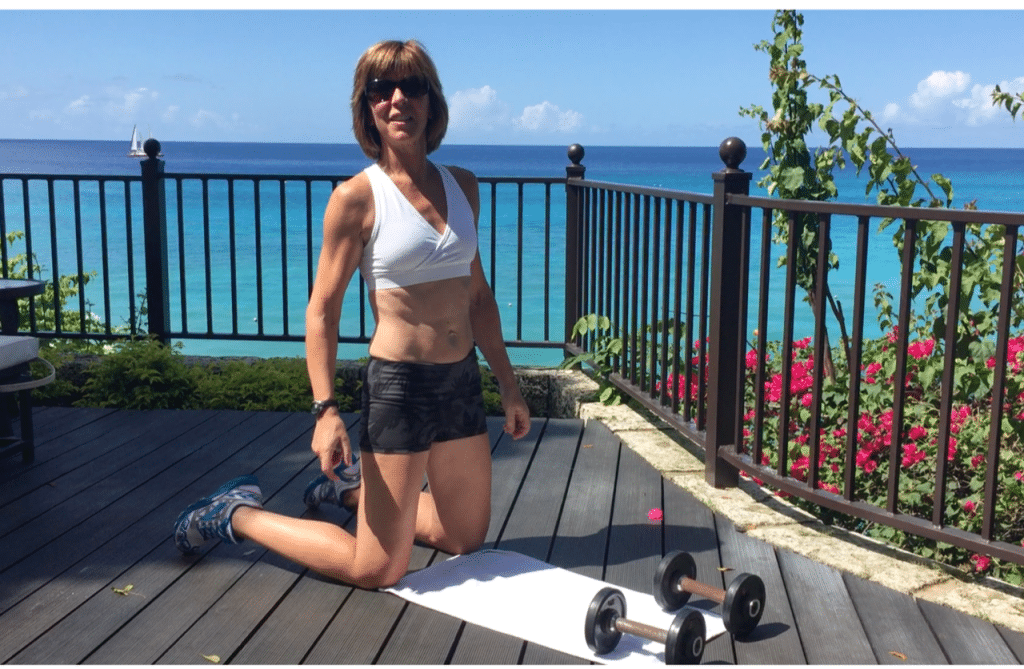As a woman 50 and older, you want to be strength training because it is one of the best ways to support your health.
This is the stage of life when you most need to be strength training.
If you haven’t started yet, it’s not too late. Studies have shown that even individuals in their 80s build muscle and bone when they begin strength training.
Being aware is half the battle. The other half is getting started.
Muscle stem cells start to disappear when estrogen levels decline which results in muscle loss. Also the drop in estrogen increases bone loss.
When you build muscle mass, it raises your resting metabolism and that makes your body burn more calories, even at rest. This helps with weight loss (as long as you don’t use exercise as an excuse to eat more). A nutritious diet and appropriate portions along with exercise are needed for weight loss and maintenance.

Here are some important tips to help you get the most from your strength training:
Tip 1:
Aim for intensity.
You need to be lifting enough weight to stimulate muscle growth.
This means that you aren’t using light weights. You know the weight is too light when you’re able to do 20 repetitions or more.
Use a weight that doesn’t allow you to do more than 10-15 repetitions and the last 2 repetitions will be a struggle without compromising form.
Proper form though is a priority and should not be sacrificed for more weight.
Once you’ve mastered proper form, slowly increase the amount of weight you’re lifting.
Don’t go light, unless you have an injury, or you’re brand new to exercise.
Tip 2:
Longer is not better.
You don’t need to exercise for a long time if you are using enough intensity to stimulate muscle growth.
Don’t be tempted to go longer. This is a huge mindset change for our midlife generation since for so long we were told that more is better.
Aim for 20 to 30 minutes. Add a 5 minute warmup and 5 minute cool down and your workout will be 30- 40 minutes in total.
You’ll see better results in weight loss, strength and body tone with the right amount of strength training. More is not better in menopause.

Tip 3:
Our recovery needs at midlife change and we require longer periods of rest.
Research suggests that more recovery time is needed between workouts at this stage of life. Instead of 48 hours in between workouts, try 72 hours and see how your body responds.
Tip 4:
Focus on exercises that involve several muscle groups at a time.
Your strength rewards are far greater with exercises that involve several muscle groups.
Aim for full-body workouts- meaning legs, core and upper body. If you need a change though, another approach is to focus on your upper body during one of your two weekly sessions and your lower body during the other weekly session.
Tip 5:
Incorporate exercises that require a balance component.
Balance exercises help improve your stability, coordination and strength which will minimize future risk of falling.
For example, you can train your balance by standing on one leg and raising the other leg to the side, in front or behind you.
I can’t tell you how many times I’ve slipped on ice and been able to regain my balance! I know it’s because I don’t neglect to include a balance challenge during strength training.
Now to get started, look at your calendar and plan 2 weight lifting sessions this week. Decide on the days, the time and allow 30 to 40 minutes to get it done. Make this appointment non-negotiable. Your health is counting on you showing up for yourself.



